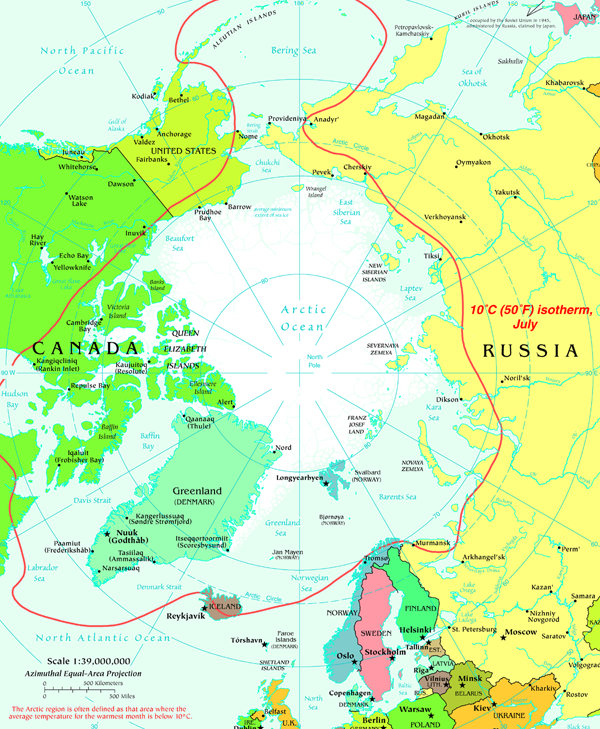
Map of Artic Circle map, Arctic Circle Atlas
Geography and Climate The Arctic Circle is about 9,900 miles long and encompasses an area of about 7.7 million sq mi, representing approximately 4% of Earth's surface. The latitudinal line passes through the Arctic Ocean, Greenland, North Asia, and the Scandinavian Peninsula.
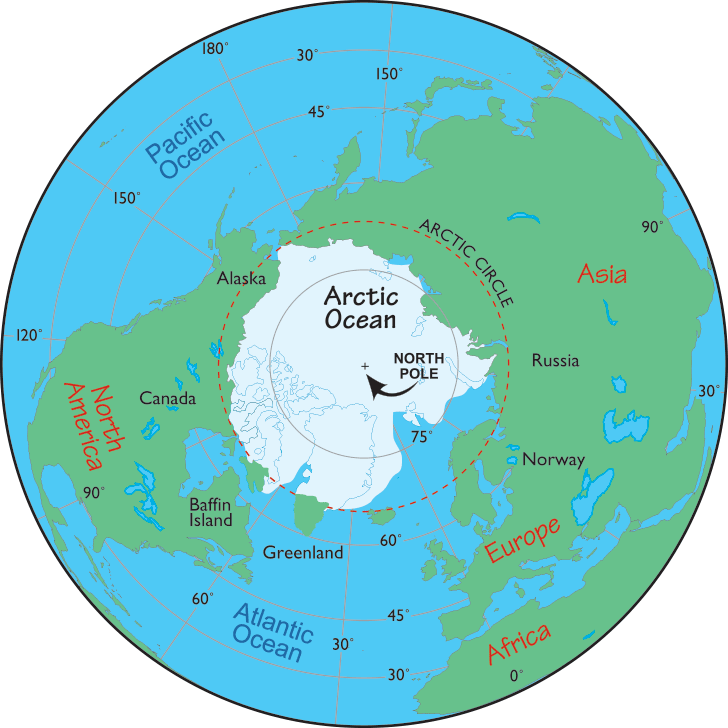
Arctic Map / Map of the Arctic Facts About the Arctic and the Arctic Circle
The Arctic Circle covers an area about 5.5 million square miles. Despite containing copious amounts of water, the Arctic is considered to be the world's second-largest polar desert. This is.

301 Best images about Arctic Ocean, Islands, Coasts on Pinterest Islands, Ocean and Iceland
The Arctic Circle is one of the two polar circles, and the most northerly of the five major circles of latitude as shown on maps of Earth at about 66° 34' N. [1] Its southern equivalent is the Antarctic Circle .

ARCTIC CIRCLE Mapping, Issues, Analysis, Arctic Council, Climate Change World Geography
Article Vocabulary The Arctic is the northernmost region of Earth. Most scientists define the Arctic as the area within the Arctic Circle, a line of latitude about 66.5° north of the Equator. Within this circle are the Arctic ocean basin and the northern parts of Scandinavia, Russia, Canada, Greenland, and the U.S. state of Alaska.

North Pole
A world map. The Arctic Circle is shown as the red line. The Arctic Circle is one of the five major circles of latitude (imaginary lines around the Earth) that are often marked on maps of the Earth. This is the parallel of latitude that (in 2000) runs 66° 33' 39" north of the Equator.

FileWorld map with arctic circle.jpg
The Arctic Circle is the imaginary line located at 66°, 30'N latitude and marks the southernmost boundary of the Arctic region. What countries are in the Arctic region Norway, Sweden , Greenland, Finland , Iceland, Russia, the USA (Alaska) and Canada are the eight countries that lie either wholly or partly within the Arctic Circle.

Arctic Oil And Natural Gas Potential Analysis Eurasia Review
The Arctic Circle is a circle of latitude encompassing the northernmost pole of the Earth and is located at approximately 66°33′45.6″ north of the. as are the long days and nights that categorize this particular region of the world.. Map: Arctic Boundaries as defined by the Arctic Research & Policy Act-ARPA, Circumpolar Map, USGS.
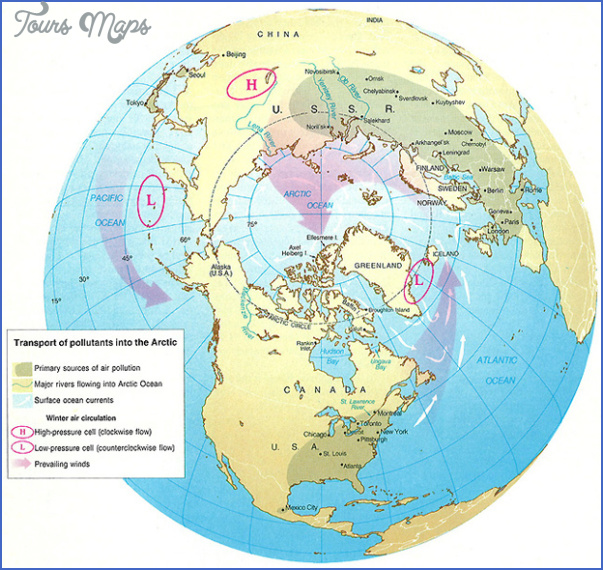
Map Of Arctic Circle
Looking at a map of the Arctic Circle gives a completely new perspective on the relative positions of the continents especially when compared with the cylindrical "Mercator Projection" maps. The Arctic is a huge area and of course a substantial part of it is the Arctic Ocean which, with an area of 5.4 million square miles, is larger than the whole of Europe.

Arctic Maps, Landmarks & Regions Swoop Arctic
Arctic Circle, parallel, or line of latitude around Earth, at approximately 66°30′ N. Because of Earth's inclination of about 23 1/2 ° to the vertical, it marks the southern limit of the area within which, for one day or more each year, the sun does not set (about June 21) or rise (about December 21).

the arctic region is shown in this map
Find local businesses, view maps and get driving directions in Google Maps.

Polar World Map
This map illustrates the Arctic Ocean, the names of the "seas" that on the northern borders of the contients, and is a political map of bordering countries. It also shows the Arctic Circle and areas that are sometimes covered with sea ice. ADVERTISEMENT

Where Does the Arctic Begin? End? — Beyond Penguins and Polar Bears
9. The Arctic Circle Is Shrinking. Nothing lasts forever. Slowly but surely, Earth's axial tilt is changing — and with it, the Arctic Circle. Every 40,000 years or so, this crucial tilt shifts from an angle of 22.1 degrees to a sharper 24.5-degree incline. Right now, we're in the middle of one such cycle.
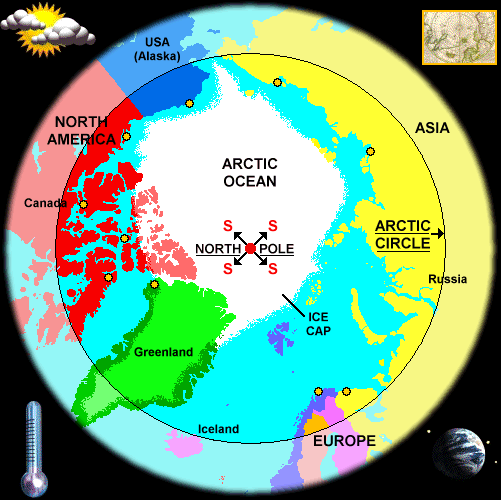
Arctic Circle Map
Continents Arctic Arctic Arctic Map The Arctic is a region of the planet, north of the Arctic Circle, and includes the Arctic Ocean, Greenland, Baffin Island, other smaller northern islands, and the far northern parts of Europe, Russia (Siberia), Alaska and Canada.
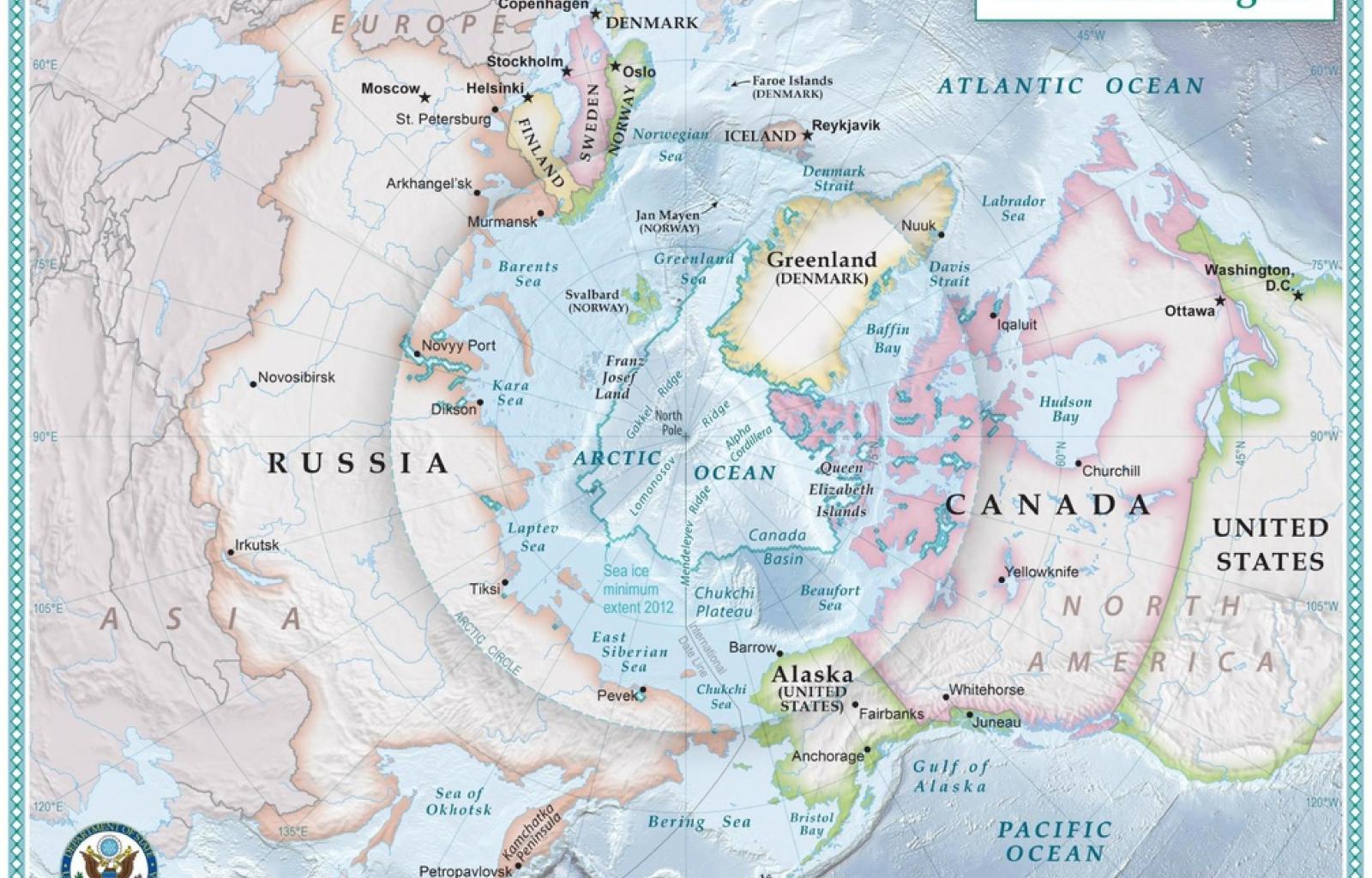
27 Arctic Circle On Map Online Map Around The World
The Arctic Circle is the parallel of latitude that runs 66° 33' 39," or roughly 66.5°, north of the Equator. Approximately 15,000 kilometers (9,300 miles) to the south is the Antarctic Circle, of equal diameter to and parallel to the Arctic Circle as well as equally distant from the Equator.
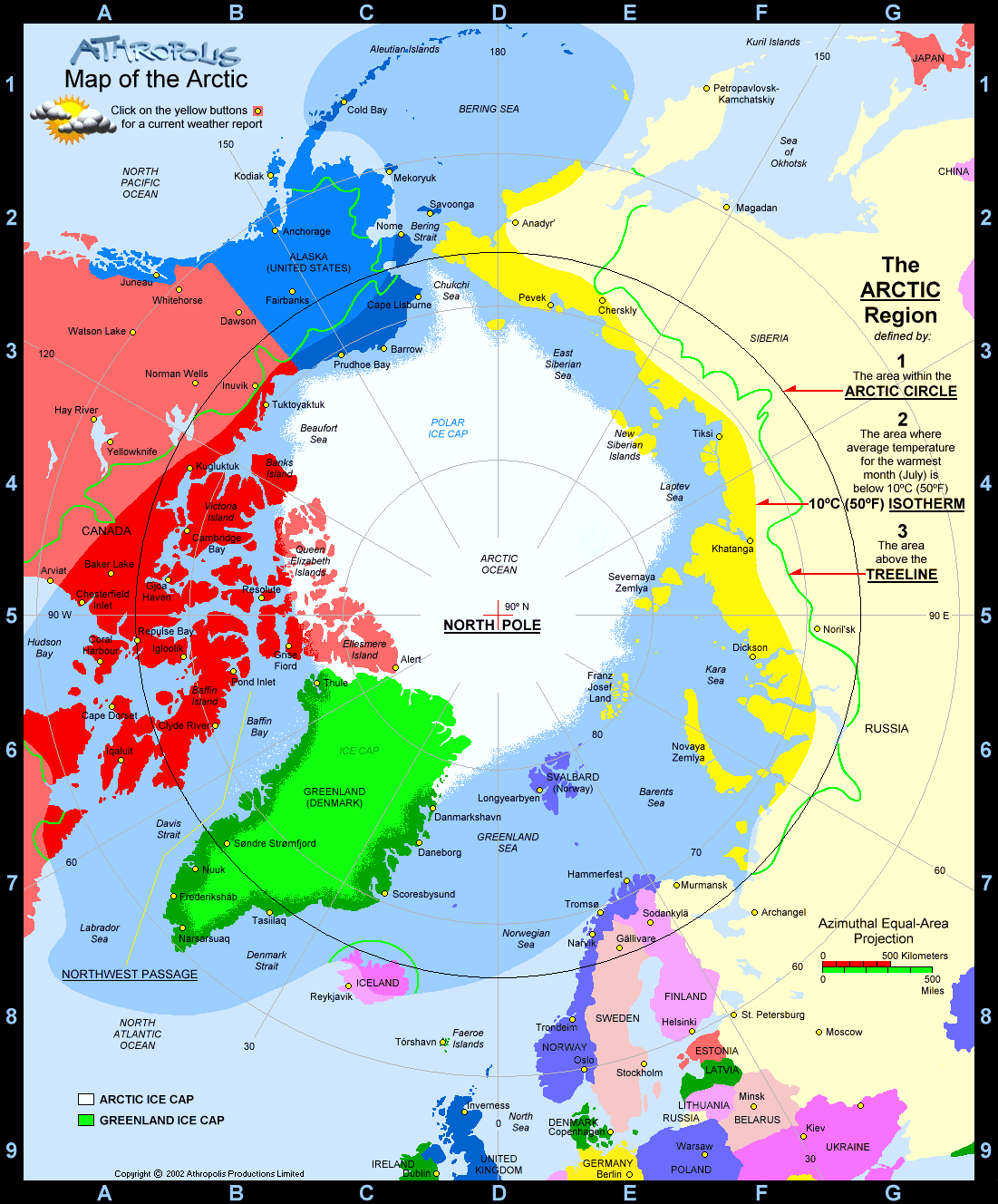
arctic Resilience Science
Much more than just a line on a map, the Arctic Circle is a gateway to one of the planet's most extraordinary regions. Here's our explanation of the Arctic Circle in Norway, and beyond. In geographic terms, the Arctic Circle is easy to explain. It is a line of latitude that encircles the globe at approximately 66° 33' North.

Map of Countries that lie within the Arctic Circle Arctic circle, Circle map, Arctic
The Arctic Circle's coordinates are approximately 66°33′45.6 north of the Equator. We say approximately because its position varies depending on the tilt of the Earth on its axis. The Arctic Circle is also being nudged - admittedly very slowly - by the Moon's gravitational pull, and is currently heading north at a rate of about 14.5 metres a year.